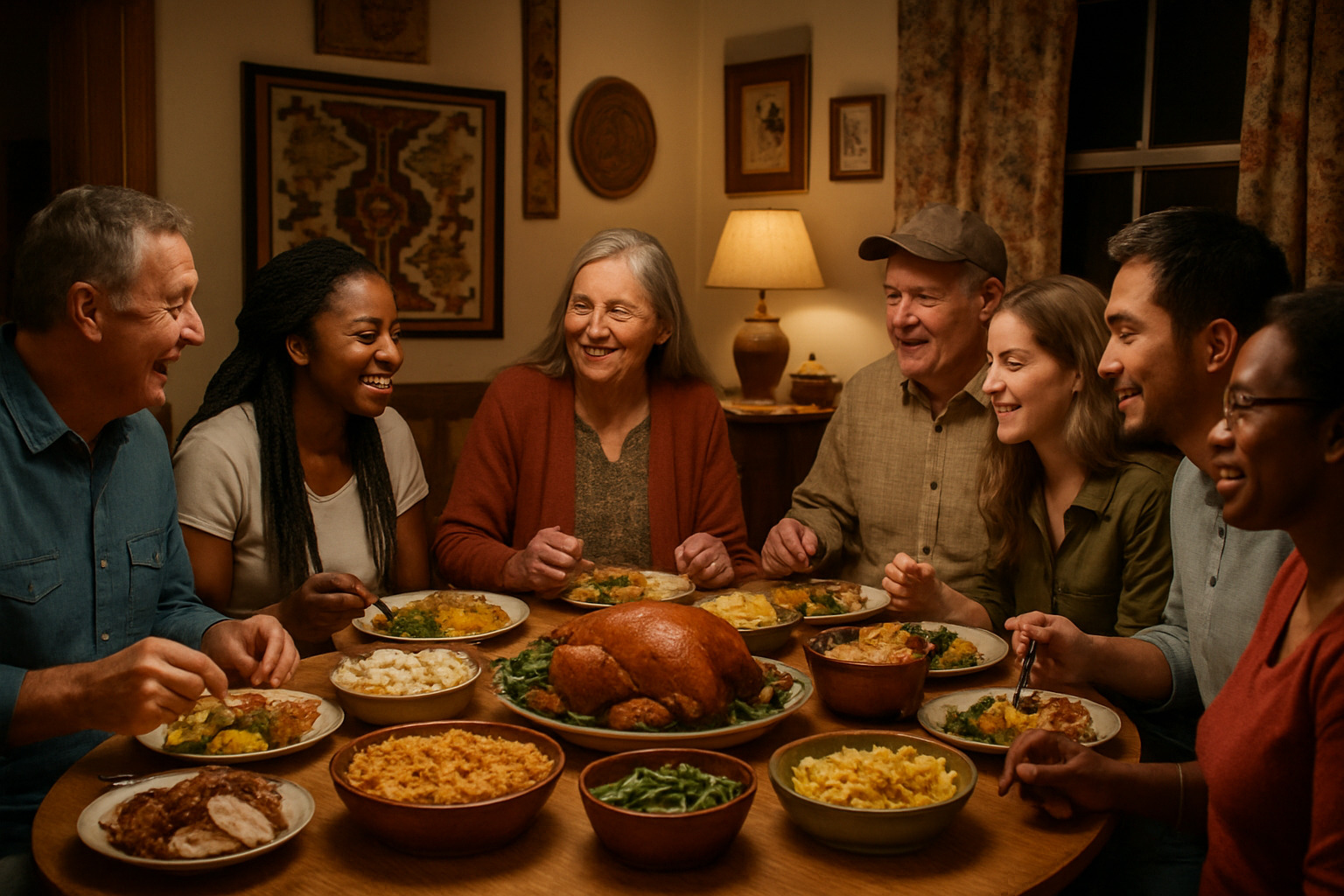Why Surface-Level Tourism Leaves Travelers Wanting More
Authentic cultural travel experiences transform how we see the world—and ourselves. Instead of snapping selfies at crowded landmarks, you’re sharing homemade meals with families, learning ancestral crafts from master artisans, and finding stories that never make it into guidebooks.
What authentic cultural travel includes:
- Homestays with local families who share daily routines and traditions
- Hands-on workshops with artisans teaching pottery, weaving, or cooking
- Community festivals where you participate rather than spectate
- Volunteering that supports local projects while building relationships
- Guided experiences led by indigenous hosts sharing their heritage
The numbers tell the story: 73% of global travelers now seek more authentic, local experiences to fully immerse themselves in culture. Another 63% are choosing lesser-known “detour destinations” over tourist hotspots.
But here’s what the statistics don’t capture—the moment when a Navajo elder explains Spider Woman’s story while pointing to ancient rock art, or when you’re following reindeer across Arctic tundra with Sami herders who’ve done this for generations. These aren’t just travel memories. They’re transformative encounters that change how you understand both other cultures and your own place in the world.
The challenge? Distinguishing genuine cultural exchange from staged performances designed for tourist consumption. Real authenticity requires moving beyond comfort zones, embracing uncertainty, and accepting that meaningful connections can’t be rushed or manufactured.

What Is Authentic Cultural Travel?
Authentic cultural travel experiences trade the tourist checklist for daily life. Instead of watching a cooking demo through a hotel window, you are side-by-side with an Italian nonna kneading pasta dough while she tells family stories. The goal is simple: move from passive observer to active participant.
You do this by matching local rhythms2an afternoon siesta in Spain, a dawn temple visit in Thailand2and by letting residents, not scripts, guide the narrative.
| Mass Tourism | Authentic Cultural Travel |
|---|---|
| Large groups, fixed schedules | Small groups or solo, flexible timing |
| International hotel chains | Local homestays or family inns |
| Guide with a script | Community hosts sharing real stories |
| Landmark photo stops | Hands-on crafts, shared meals |
| Tourist markets | Buying directly from artisans |
The difference comes down to agency and reciprocity. Communities decide what to share and benefit directly, while travelers gain context that no museum label can match.
Why Authentic Cultural Travel Matters
Choosing authentic cultural travel experiences reshapes more than your itinerary2it changes economies, safeguards traditions, and builds empathy.
2 Economic uplift: Homestays, direct-from-artist purchases, and community tours keep money in local pockets instead of corporate HQs.
2 Heritage preservation: When weaving lessons or storytelling walks generate income, younger generations have a reason to learn and keep traditions alive.
2 Empathy boost: Sharing breakfast with a host family or helping at harvest lets you understand daily hopes and challenges in a way no documentary can.
Hilton2015 Travel Trends reports 73 % of global travelers seek local, authentic moments2proof that this shift is mainstream.
Community Lens
Undertourism areas often rely on small visitor numbers to fund schools, clinics, and cultural centers. Agritourism, for example, lets farmers earn extra income while teaching sustainable food practices.
Traveler Lens
You return with skills (cross-cultural communication, adaptability) and stories your friends actually want to hear. Many travelers stay in touch with hosts, support projects remotely, or simply approach life at home more mindfully.
Finding & Choosing Authentic Experiences
Great authentic cultural travel experiences rarely come from a banner ad. Dig a little deeper:
2 Homestays & work-for-stay: Sites like WWOOF or community Facebook pages pair travelers with families that need help and offer room, board, and culture in return.
2 Mini-apprenticeships: Platforms such as VAWAA connect you with master artisans for two-to-seven-day workshops.
2 Festival participation: Seek events that exist with or without tourists2harvest feasts, coming-of-age ceremonies, neighborhood saints2not daily stage shows.
For step-by-step search tips, see Immersive Journeys: Finding Cultures Around the World.
Red Flags
2 Crowds packed in daily “cultural shows”.
2 Very cheap prices that suggest unfair wages.
2 Experiences run by outsiders with locals only as employees.
2 Promises of “secret” or “forbidden” rituals.

Budget and Technology: Friends or Foes?
Tight funds and a smartphone can actually open up authentic cultural travel experiences.
Authenticity on a Shoestring
2 Work-for-stay programs cover lodging while you help at farms, schools, or conservation projects.
2 Local buses and street food force you into real conversations and rhythms2and cost a fraction of tourist shuttles.
Tech That Helps, Not Hinders
2 Translation apps clear first-contact problems but shouldn’t replace learning a few key phrases.
2 AR tools like Timelooper layer history onto ruins without needing a guidebook.
Use tech to improve presence, then pocket the phone so you can actually be present.

Measuring Impact & Traveling Responsibly
Your visit leaves ripples. Responsible authentic cultural travel experiences aim for positive ones.
2 Cultural respect: Learn dress codes, ask before photos, and follow host cues.
2 Economic fairness: Pay fair prices; buy from the maker, not a middleman.
2 Environmental care: Slow travel, refillable bottles, and obeying site rules keep fragile places intact.
Track Your Footprint
A simple journal works: note who benefited, what you learned, and how you might give back. Ask hosts for honest feedback; adjust accordingly.
Giving Back
Pay full rates, share skills (language help, marketing tips), and keep relationships alive after you leave2small gestures that mean a lot.
Frequently Asked Questions about Authentic Cultural Travel
What if I don2t speak the language?
Learn hello/please/thank-you, use a translation app for tough spots, and let smiles, gestures, and shared tasks do the rest.
How do I photograph respectfully?
Ask first, accept “no,” and sometimes put the camera away entirely. Offer to send copies of photos you do take. See our Ethical Travel Photography guide.
Can I find authenticity on a short trip?
Yes2choose one deep activity (morning market tour + cooking lesson, half-day craft class) instead of six superficial stops.
How do I prepare for cultural differences?
Read beyond guidebooks, pack modest clothing, expect discomfort, and approach everything with curiosity.
What if I make a cultural mistake?
Apologize, learn the correct practice, and move on2most hosts appreciate the effort far more than perfection.
Conclusion
The journey through authentic cultural travel experiences reveals something remarkable: when we step away from tourist traps and accept genuine cultural connections, we don’t just change our travel—we change ourselves. Those statistics about 73% of travelers seeking deeper experiences? They represent millions of people who’ve finded that the most meaningful moments happen when you’re sharing tea with a Berber family in Morocco’s Atlas Mountains, not rushing through another museum.
At Soaring in Style, we’ve seen how mindful travel creates ripples that extend far beyond any single trip. When you choose to learn pottery from a village artisan instead of buying mass-produced souvenirs, you’re supporting a tradition that might otherwise disappear. When you stay with local families rather than international hotel chains, your tourism dollars directly support the communities that welcome you into their homes.
But here’s what we’ve learned from years of exploring cultures around the world: authenticity can’t be rushed or manufactured. The most profound authentic cultural travel experiences emerge when you approach other cultures with genuine curiosity and humility. They happen when you’re willing to fumble through language barriers, adapt to local rhythms, and accept that meaningful connections take time to develop.
The responsibility we carry as travelers is both simple and profound. Every choice we make—from where we sleep to what we eat to how we engage with local communities—either contributes to cultural preservation or undermines it. When we research thoroughly, travel respectfully, and prioritize relationships over itineraries, we become part of a movement toward tourism that actually benefits the places we visit.
The future of travel depends on this collective shift toward authenticity over convenience. Each time someone chooses a homestay over a resort, learns traditional skills from local masters, or participates respectfully in community celebrations, they’re voting for a type of tourism that builds bridges instead of barriers.
For travelers ready to accept this approach, our guide on Travel Green—Sustainable Tips for Conscious Explorers offers practical strategies for making every journey more meaningful and responsible.
The path forward is clear, even if it’s not always easy. Authentic cultural travel experiences require us to slow down in a world, to listen more than we speak, and to value understanding over entertainment. In return, they offer something no staged performance or crowded landmark can provide: genuine moments of human connection that remind us of our shared humanity.
Your next travel decision is an opportunity to choose depth over superficiality, connection over consumption. The cultures of our world are waiting—not to perform for you, but to share their stories with travelers who approach with open hearts and respectful minds.


